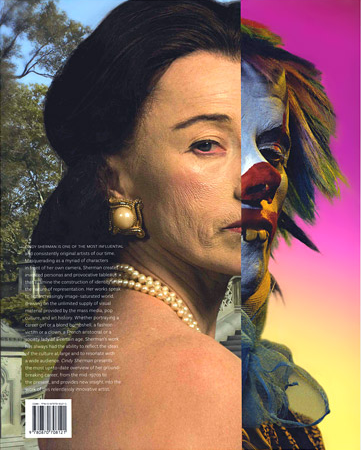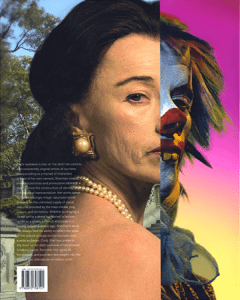
25 Apr TIO NYC: CINDY SHERMAN AT MOMA
 If art is a mirror of life (here I am paraphrasing 19th-century French critic Baudelaire), then artist Cindy Sherman (born 1954) must be running through bottles of Windex keeping that glass clean. Using the lens of her camera to capture her vision of things – with herself playing multiple protagonists in the drama of life – Sherman has continually and perceptively explored the nature of representation and the nuances of contemporary identity.
If art is a mirror of life (here I am paraphrasing 19th-century French critic Baudelaire), then artist Cindy Sherman (born 1954) must be running through bottles of Windex keeping that glass clean. Using the lens of her camera to capture her vision of things – with herself playing multiple protagonists in the drama of life – Sherman has continually and perceptively explored the nature of representation and the nuances of contemporary identity.
Her particular and pointed brand of schizophrenia has garnered Sherman heaps of hallelujahs. But is the artist really the bee’s knees? Does she deserve to be described, as she is over and over again, as one of the most “important and influential artists in contemporary art?” My crowd and several of my friends would say the show is “interesting.” But groundbreaking? Maybe not. Gerhard Richter is ground-breaking. Sherman? Definitely worth seeing, if only to figure what all the fuss is about. And truth be told, lots of the images are very very clever and astute satires. Let’s give the girl her due.
Drawing from an veritable arsenal of wigs, costumes, makeup, prosthetics and props, Sherman has repeatedly altered her physique and physiognomy to create a series of tableaux: a clown, Bacchus (a riff on a Caravaggio), a sex kitten, a society matron, mutants that echo Greek mythology, half-human, half piggie.
The blockbuster retrospective currently on display at the Museum of Modern Art represents the very first time in about 15 years Sherman’s adoring public has had a chance to examine the sweep of her 35-year career. Beginning with her early work from the mid-1970s, the show includes more than 170 photographs, including the American premiere of a giant mural composed on different pieces of wallpaper, featuring pictures of Central Park and life-size depictions of Sherman posing in costumes: an ill-fitting nude suit, carrying a sword, holding juggling clubs. (Well armed to mug her audience.)
The show is organized thematically: Hollywood film noir and European art-house films from the 1950s and 1960s; society portraits; AIDS and other degrading horrors, mostly sexual; a take-off on men’s magazines; and my favorite, history, in which the artist poses as various aristocrats, clergyman, and milk maids in the manner of Old Master portraits. Scratch the surface and we find the nature of Sherman’s obsessions: artifice and fiction; cinema and performance; horror and the grotesque; myth, carnival, and fairy tale; genes and class identity.
In conjunction with the exhibition, Sherman has selected films from MoMA’s collection, which will be screened in MoMA’s theaters during the course of the exhibition.
Following the New York show, which closes June 11, the retrospective travels to the San Francisco Museum of Modern Art and then the Walker Art Center in Minneapolis.



Sorry, the comment form is closed at this time.